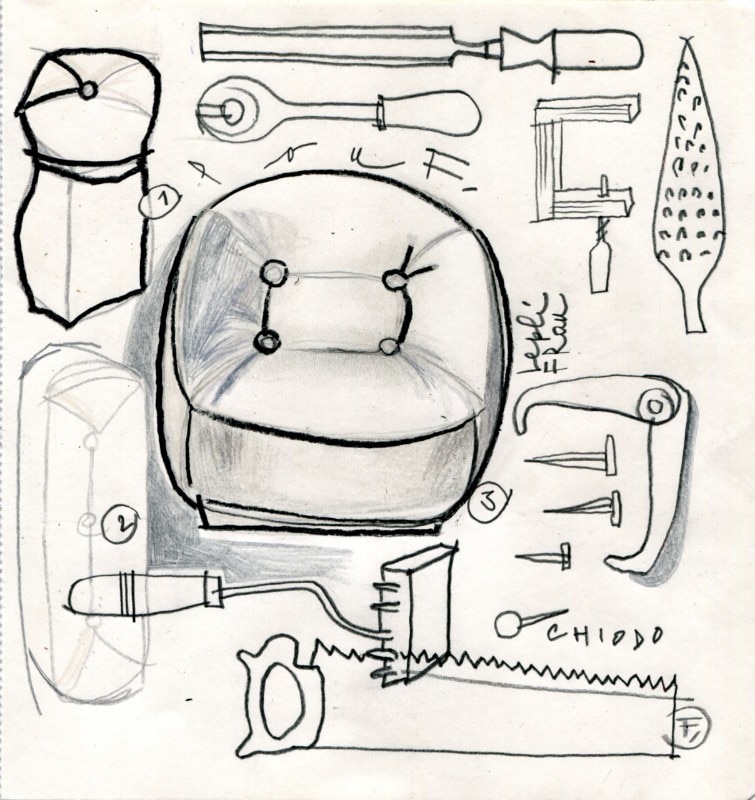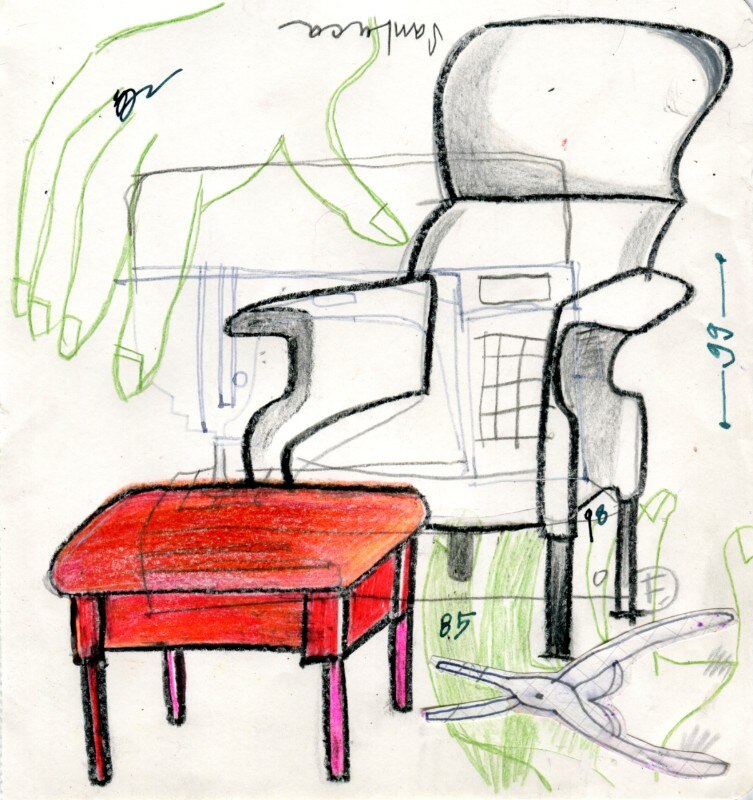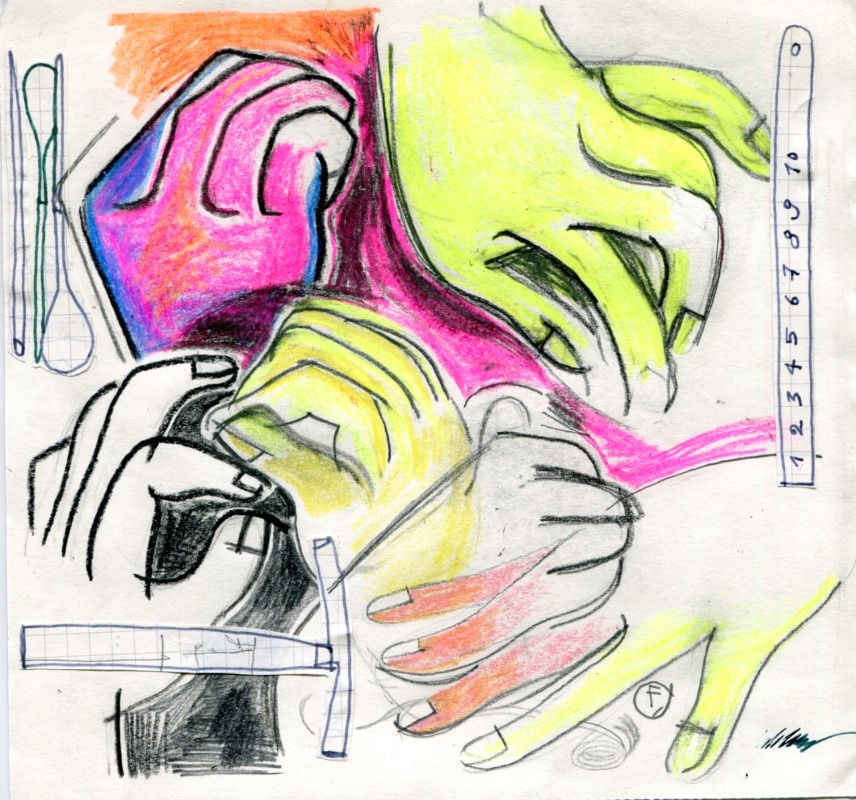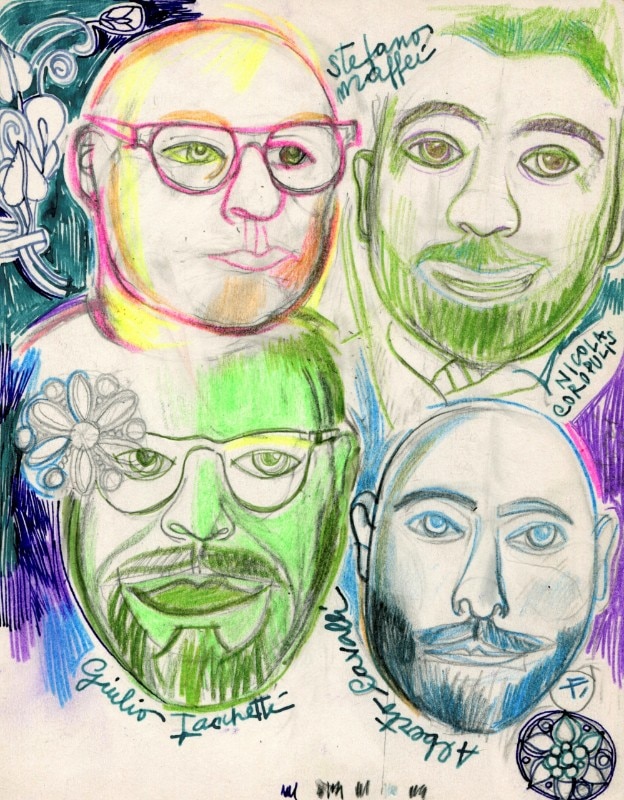This article was originally published in Domus 1056, April 2021.
- Alberto Cavalli:
- Executive Director at Michelangelo Foundation, General Manager at Fondazione Cologni
- Giulio Iacchetti:
- Industrial designer
- Nicola Coropulis:
- CEO of Poltrona Frau
- Stefano Maffei:
- Professor at Politecnico di Milano, director at Polifactory.
Giulio Iacchetti: A whole world opens up when you consult a craftsperson in the relationship with the designer. Craft and design drive each other, as shown by the noble precedents of Ettore Sottsass and Enzo Mari. The former can save tradition from clichés while the latter recognises the former’s values. These include the craftsperson’s time, meaning good quality and fast execution. Design, by contrast, requires a longer soaking-in period. Industry is slower at the planning stage but accelerates when it reaches the end phase of mass production.
Nicola Coropulis: I find that local craft skills are often boosted by the rationale of replicability and the scale of industrial production. Craft, industry and technological innovation must be brought together, especially because the latter two improve safety in the workplace and reduce raw-material waste as well as elevating the quality of the end product and customer service. The relationship with the local area also works via its schools which should ensure that skills are handed down from one generation to another via the school’s ability to train people for the work world.

Alberto Cavalli: The artistic crafts look more to human values than production ones. It is pointless to create conflict – craft against technology, for example. Technology is a tool and you choose what to do with it but familiarity with the tool cultivates a certain outlook. The real enemy of the artistic crafts is an ignorance of the values that make a human being’s work mindful and creative. Producing more objects but lacking in value generates discontent and anxiety. The craftsperson is always eager to innovate and the designer’s respect and training are key. ADI sees design as a “culturally aware creative process”. This definition contains all the values that make the artistic crafts so important today for a more sustainable future. Sustainability lies in dreams, freedom and the diversity of what you create. It is essential to let the new generations know that you can be happy in your work and that the crafts can creatively transform the materials around us into objects desired by the whole world.

Stefano Maffei: Allow me a provocation. It is right to speak of dreams and freedom versus standardisation but craft and industry have sometimes been the architects of this process rather than its solution. We must reconsider the current industrialist paradigm stemming from the 1960s. In Pomeriggi alla media industria, Andrea Branzi described the Italian industrial specialisation system as intelligent craftsmanship working with industry in an original manner. Remember that some extraordinarily technical objects are craft products, such as the Rover that has landed on Mars. Today, the digital boosts our ability to access the needs of individuals and society, and that is where we must update the culture of the discipline. There are not just political prospects behind the Recovery Fund or the New Green Deal but industrial and research ones too, containing new dreams, needs and values. We must understand what role the craftsperson plays in interpreting these changes in true homo faber spirit – by using manufacturing expertise to impact on the future and its challenges.
The production of durable products must focus more on responding to the demand to reduce waste as we look to a world with a fresh awareness and consumption models more conscious of environmental impact.
Nicola Coropulis: What Stefano says is true. We often look more to the past than the future. The pandemic has accelerated a number of latent phenomena and I believe it is right to see the importance of industry in the context of future challenges. The production of durable products must focus more on responding to the demand to reduce waste as we look to a world with a fresh awareness and consumption models more conscious of environmental impact.

Alberto Cavalli: What is produced tomorrow will respond to the desires and ethos manifested by the younger generations today. The search for authenticity of expression, for originality that combines proximity to the source with appreciable positive change and for tradition as a drive to emerge from a sense of déjà vu are the values of the art masters, values that are essential in this transition. We have grown up with a promise of the future but that future is now a threat. We see all the social tensions ripping through Italy. Safeguarding the craftsperson in Italy and elsewhere means giving them a fulfilling work prospect that respects the person and the environment, revitalises the local area and gets the heart racing. I believe all this can help make society more just.
Safeguarding the craftsperson in Italy and elsewhere means giving them a fulfilling work prospect that respects the person and the environment, revitalises the local area and gets the heart racing.
Giulio Iacchetti: agree with Alberto when he says that we must move on from the crafttechnology dichotomy and I am pleased he has legitimised the word “happiness” which is taboo. As a designer, I always find the fullness of life in craft workshops, places of doing and thinking where the ultimate aim is to create collectively an object that can survive us. This is the attraction of the crafts – objects born out of care and happiness are bearers of this desire to go beyond their time.
.jpg.foto.rmedium.jpg)
Stefano Maffei: I believe that technology is more the environment we live in than a tool. That is the difference between traditional and contemporary craftsmanship. Craft practice is entering a complex context that mixes the disciplines and the “workshop” is ever closer to the concept of the “laboratory”. This applies to the EU’s first concrete design initiative, the New European Bauhaus, about which Ursula von der Leyen has spoken. She sees multidisciplinarity as a response to our environmental challenges. It is a project in which Italy, with its design and making culture, ought to participate.
Nicola Coropulis: I agree. Craft thrives and evolves in the relationship with technology and innovation because that is the only way to work with local expertise, improve it and hand it down. Only thus can we become the architects of the dissemination of this knowledge, which would otherwise be lost if uncoupled from evolution or the world around us.
Opening image: illustration Francesca Bazzurro


